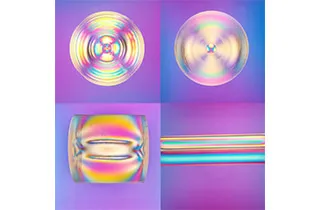
General glass products must be annealed to eliminate their internal stress. Nevertheless, there will be residual stress in glass products to varying degrees, which is called permanent stress. Sometimes the stress is so large that it affects the service performance of glass (such as glass bottle), which is called stress defect.
On the one hand, the stress defect is caused by poor glass quality or uneven glass composition, which is generally called structural stress. For example, when there are stones, stripes or uneven glass composition in the glass, stress will be generated when it is cooled to room temperature due to the different thermal expansion coefficients of each component. This kind of stress caused by stones, stripes and heterogeneity is difficult to eliminate, which will cause the explosion of products in serious cases.
Another kind of stress is thermal stress, which is caused by the temperature difference of various parts of glass products in the production process. For example, during the molding and cooling process of the glass bottle, the internal and external cooling speeds are different, resulting in compressive stress inside the glass bottle and tensile stress outside. This situation can be basically eliminated by annealing. What we need to measure is the magnitude of this residual thermal stress.
The Glass Polarimeter measures the internal stress of a transparent object through the phenomenon of birefringence. This method can quickly and continuously identify the stress of transparent products such as optical glass and bottle glass.